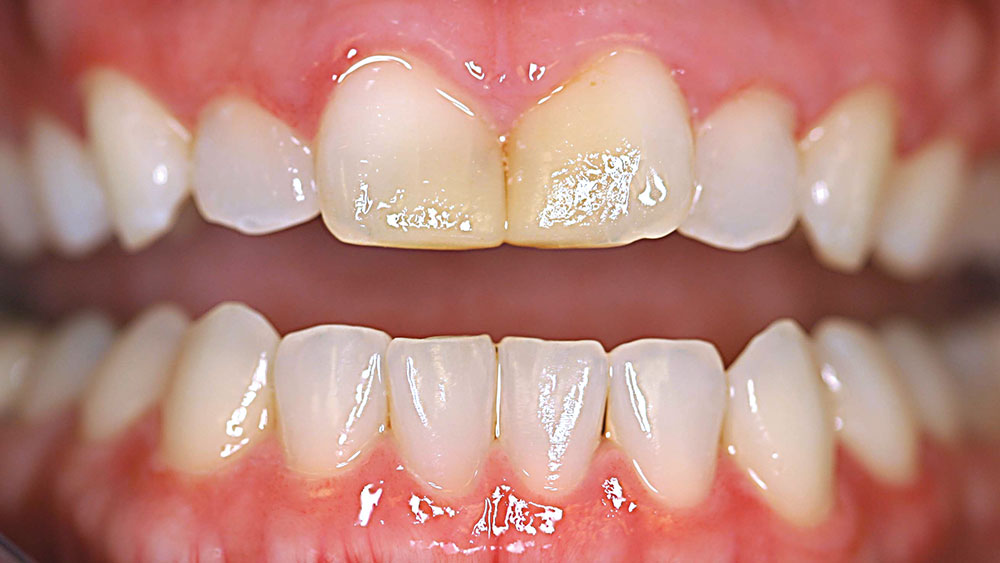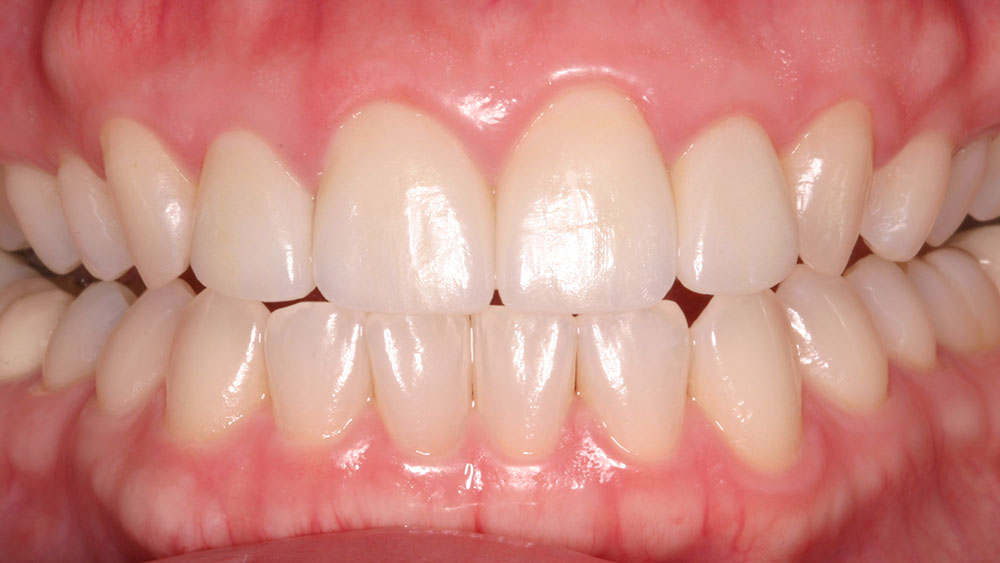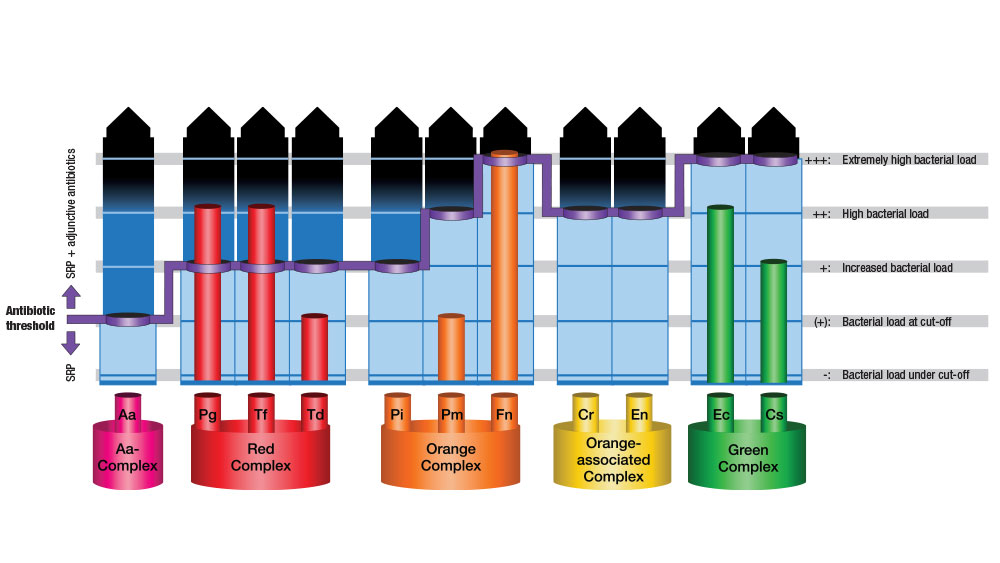The Role of a World-Class Periodontal Therapy Program in a Cosmetically Oriented General Practice
In my last Chairside® article, I discussed how the public is now very much tuned in to the connection between oral health and whole body health. This is fantastic news for the dental profession because now people are beginning to realize that great oral health is an important key to living a long, healthy life. One of the specific recommendations I made in the last issue was to review your system for conservative periodontal therapy in your practice and update it to 21st century standards. In response to the groundswell of feedback to that article, and that recommendation in particular, I have decided to devote this entire article to discuss how to develop a world-class periodontal therapy program in a cosmetically oriented general practice. I have invited a renowned authority on conservative periodontal therapy, Dr. Thomas Nabors, to co-author this article.
Why is this topic important to you? We will provide three very compelling reasons. The first reason why treating perio disease in a cosmetically oriented practice is important is that by getting the gums healthy you will provide a wonderful foundation to support your beautiful esthetic restorations. A second reason is that a strong periodontal therapy program will greatly enhance your practice profitability. A third reason to get serious about treating perio disease is that by doing so you may just save someone’s life! Hopefully, we have your attention.
Perio disease is a silent epidemic today. Depending on which organization we care to reference (ADA, AGD or AAP), the incidence of perio disease in the adult U.S. population is estimated to be between 74% to 80%. However, data from insurance companies tell us that less than 5% of insurance claims submitted for hygiene services on adults in the U.S. are for perio procedures. What is wrong with this picture? You have a huge opportunity to help your patients become healthier by getting serious about treating perio disease.
Let’s start by evaluating how we can determine the presence of periodontal disease. In the past, we viewed the etiology of periodontal disease as plaque and calculus.
Today, however, we know that periodontal infections are much more specific and are caused by single or multiple pathogenic species. Obviously, we cannot “see” these microorganisms and cannot know clinically if we are treating the “real cause” by simply using clinical signs and by mechanical therapy (e.g., SRP) alone. Science tells us that an effective means of diagnosing a disease is to run a culture and identify the pathenogenic bacteria. This is certainly the model used in medicine. However, traditional culturing mechanisms in the dental office have presented serious limitations.
However, today we have the miracle of DNA-PCR (polymerase chain reaction). This simple chairside test can detect the exact microorganisms and the quantity of them to confirm the exact cause and severity of every periodontal infection. Now, we can target the “real cause” of the disease and know if we have removed the organisms that are causing every infection. By using the DNA of the microorganisms and using PCR, we can discover the exact cause of the infection and know if we have eliminated the cause.
Plus, we have always known there is a genetic component of periodontal disease. You have likely noticed this within your practice. Some patients exhibit great home care and are regular with their hygiene appointments, yet they still develop periodontal disease. While other patients demonstrate poor home care, keep a random schedule of hygiene appointments and do not develop periodontal disease. Science now tells us that approximately 30% of our patients have a true genetic risk for developing inflammatory infections. When present, these “genotype positive” individuals will react very aggressively to any pathogenic challenge. In fact, they produce an immune response similar to an autoimmune response we see in other systemic disease such as arthritis or lupus. DNA-PCR allows us to use human cells (cheek swab) to identify patients at risk for developing inflammatory infections.
The diagnostic component of disease treatment could be argued to be the most important. Without an accurate diagnosis, we do not know if we are treating the disease correctly. (This is a major reason for relapse.) Thus, in the world of infectious disease diagnosis, it is best to know what we are treating before we actually treat.
The “wellness model” is built around risk management. Today, DNA-PCR allows us to accurately identify the two most important risk factors for periodontal infections:
- The pathogens that are causing the immune response (BOP, pockets, bone loss, etc.).
- The genetic susceptibility: we know of four genetic profiles.
This information is truly revolutionary and is paramount for knowing when to treat and how aggressively to treat. Thus, every patient with any clinical signs would benefit from having this information. The tests available today are very simple to administer, painless for the patient, inexpensive, and provide extremely valuable information. Figure 3 is a sample of a pre-treatment results report that shows the presence of the 13 types of bacteria that cause periodontal disease. Figure 4 shows that same patient’s result report after treatment and demonstrates how the pathenogenic bacteria have been dramatically reduced after successful treatment. When we can diagnose infections early enough, we can in fact cure most of these infections.
Diagnosis must be followed by 21st century treatment. Non-surgical treatment always should include medications along with mechanical therapy. “Debridement” means both mechanical and chemical removal of diseased tissue and debris. Local medications may include povidone iodine, chlorhexidine, chlorine solutions or “natural” based solutions.
Once diagnosed using DNA-PCR testing (along with clinical parameters), we must find the time for treatment. If you are telling your patients that they, in fact, have a disease and you are motivating them to receive treatment but your full hygiene schedule does not allow them to be seen for many weeks, then we have a very incongruent situation! Thus, “block scheduling” for periodontal procedures becomes an important component of an excellent periodontal program. Once diagnosed, your patient will want to be seen as early as possible, and your periodontal therapists should be “pre-blocked” so that ideally your patient can begin treatment within 48 hours of diagnosis. If your patient has to wait weeks or even months for treatment, their perception of the importance of disease diminishes based upon your concern for intervention.
As a reader of Chairside, we know that you have an interest in cosmetic dentistry. The advances in modern dental treatment allow you to help virtually any patient have the smile of their dreams. However, as exciting as the cosmetic treatment is, it is just as important to make sure that you have healthy gum tissue to support your beautiful cosmetic restorations. Figures 1 and 2 provide a case study of the synergy between cosmetic dentistry and periodontal therapy. Figure 1 shows how the patient presented pre-treatment. She was interested in cosmetic treatment to correct the esthetic concerns with her smile. Notice the condition of the gums in Figure 1 in addition to the issues with her teeth. The treatment plan included porcelain veneers and periodontal therapy including root planning and curettage, in-office and at home irrigation, and specific antibiotic medication. Figure 2 was taken post-treatment. This case study shows how the combination of beautiful cosmetic restorations with state-of-the-art periodontal therapy treatment will truly help your patients have the best of all results: a gorgeous, healthy smile!
As if the beneficial health results of successfully treating periodontal disease were not enough, there are significant financial benefits to getting serious about treating periodontal disease as well. Your hygiene department (we’d prefer to call it your periodontal therapy department) should be a profit center in your practice and should make a very positive contribution to your financial bottom line. The way to achieve this result is to create a mix of services within your hygiene department. This mix will include routine prophylaxis services for your periodontally healthy patients combined with a number of periodontal therapy appointments on a daily basis. Remember that the incident of perio disease has been reported at 74% to 80% of the population, so isn’t it reasonable that the mix of services within your hygiene department should reflect similar data? It is absolutely appropriate that your hygiene department become a profitable component of your practice. You deserve nothing less!
In the opening section of this article, we made the bold statement that getting serious about treating periodontal disease may just result in you saving a patient’s life. Let’s back up this statement with some facts. The oral/systemic connection is real! Periodontal infections are true inflammatory diseases, and these pathogens create bacteremias with very virulent pathogens circulating throughout the circulatory system. These pathogens have the ability to invade epithelial cells and endothelial cells. The scientific evidence suggests the more severe the periodontal infection is, the greater the risk for systemic effect. Acute or chronic infections located in any system of the body have a direct effect on the health of the rest of the body. Inflammation and the immune response to pathogenic threats are interpreted differently by each individual, and some people react very aggressively to the pathogens we commonly treat. Thus, periodontal health has a dramatic impact on the health of the individual.
Our responsibility as health providers is defined by more than healthy teeth. We should make it our goal to ensure that our patients are as healthy as possible as soon as possible. Our accurate diagnosis and intervention may impact an unborn baby, the health of the mother, or the difference between a healthy heart and circulatory system or an unhealthy one. Periodontal health is truly a “life” issue and may mean the difference between a healthy life and a premature death.
The role of a world-class periodontal therapy program in a cosmetically oriented practice is threefold. First of all, successful periodontal therapy will provide your patients with healthy gum tissue to support your beautiful cosmetic restorations. Secondly, a strong periodontal therapy program will make your practice more profitable. And finally, a world-class periodontal therapy program in your office may just save someone’s life! We hope this article has provided you with the information and motivation to develop the periodontal therapy program within your practice to its full potential. You and your patients deserve the amazing results that will follow!
Result report micro-IDent® plus
DNA test for periodontopathogenic marker bacteria
Microbiological analysis resulted in a bacterial concentration requiring treatment due to the following complexes: Red Complex (Pg, Tf), Orange Complex (Fn). Depending on the clinical findings this requires, in addition to mechanical treatment (SRP), an adjunctive antibiotic administration (scenario 2, metronidazole: 2 x 500 MG/day, 8 days). For evaluating therapy success a control analysis is recommended approx. 8 weeks after cessation of antibiotic intake.
Microbiological analysis resulted in a bacterial concentration which, depending on the clinical findings, can be treated with SRP. Control analyses should be conducted yearly.
Important: The selection of therapy must take into account: 1) periodontal status; 2) patient’s medical status; and 3) possible adverse patient reactions to antibiotics. The treatment dentist is responsible for deciding on the use and choice of antibiotic therapy, and Advanced Dental Diagnostics, LLC will not be liable for any direct, indirect, consequential, special, exemplary or other damages arising from treating dentist’s negligence. High risk patients should be consulted with a periodontist.
For more information, contact Mr. Takacs at gary@garytakacs.com or Dr. Nabors at tomn@addx.us.








